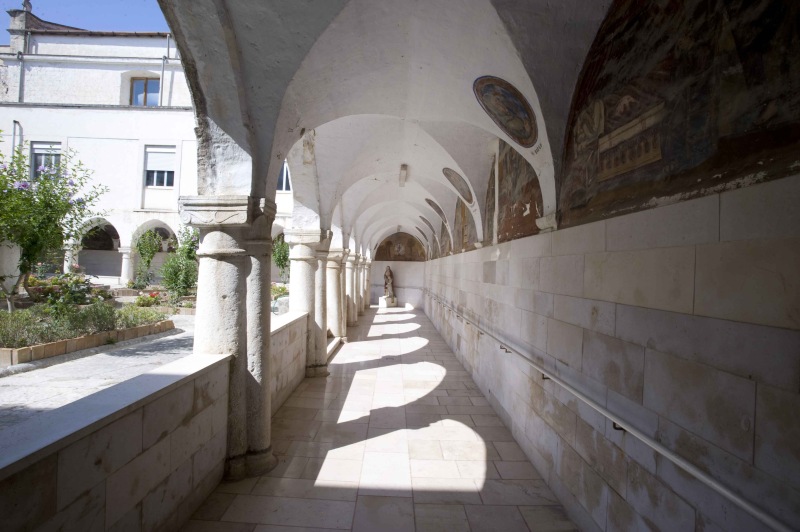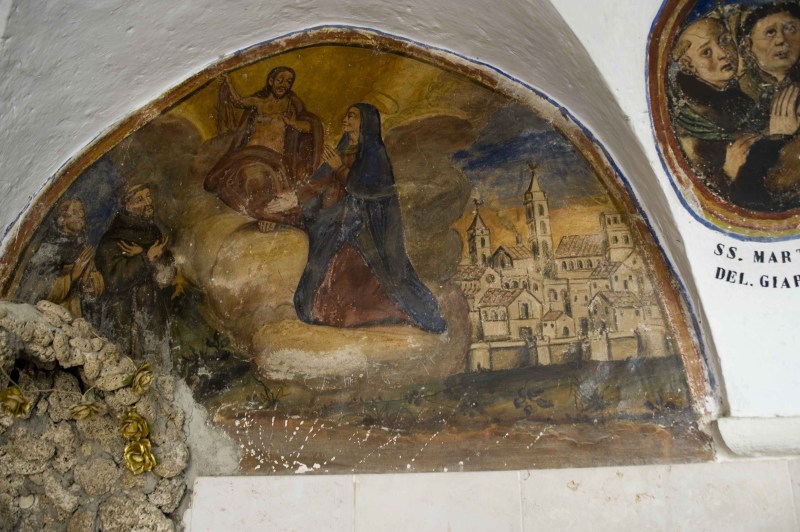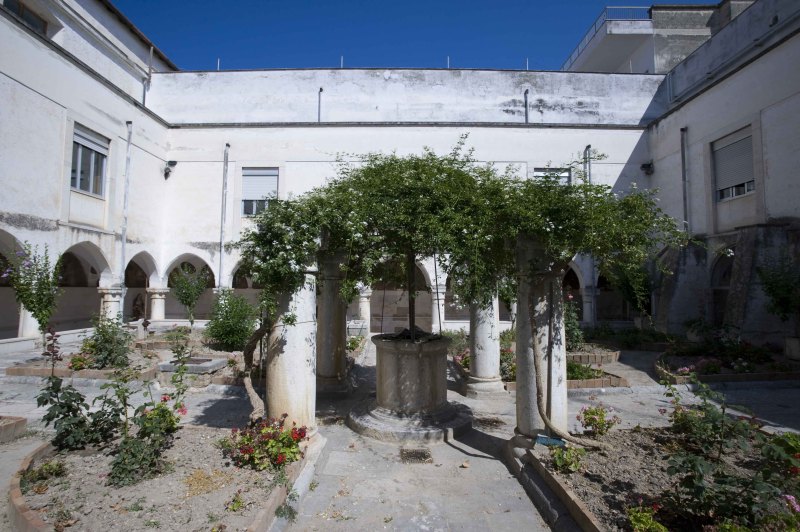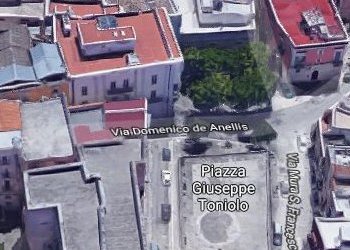CHURCH OF SANTA MARIA VETERE
The date of the foundation of this monumental complex is still uncertain. The church was built outside the curtain wall of Andria, not far from the gate called "La Barra". Undoubtedly it can be identified with one of the convents mentioned in 1438 in the bulla of pope Eugenio IV, who authorized the provincial vicar of the friars minor observants to establish three convents, of which one in honour of S. Maria Vetere. It seems likely, though, that it was the enlargement of an already existing building, as proved by the fact that Antonia Brunfonte, mother of Francesco II del Balzo, was buried there in 1419. In the following century the convent received endowments from the noble woman Anna de Salzedo, who wanted to be buried in the same convent and donated her patrimony to the monastic community. The convent was one of the most important of the Monastic Province of San Nicola, indeed, the provincial minister of the order established his office in it. In the 17th and 18th centuries it housed a school of theology and a hospital for the sick, it also played such an important role in the life of the village around that it avoided the confiscation which involved most of the monastic orders' patrimony in the Napoleonic age. Only after the unification of Italy, in 1866, the monumental complex passed into the hands of the city administration, which established a rest home inside of it. The building underwent radical changes, which, however, spared the valuable cloister of 1567 that still features in the lunettes frescoes with episodes from the life and miracles of San Francesco.
The church has a sober facade featuring a large portal surmounted by a large window and a niche with the statue of San Francesco kneeling; two more statues showing Sant'Antonio and San Pasquale Baylon are on top of the sloping roof.
It has a single-nave plan, although some assume that the original church had three naves, of which the left aisle was transformed over time into a chapel and the right one was absorbed into the cloister.
A slab reminds of the construction of the gilded wooden ceiling, of a new pavement and six side altars during the 18th -century works, of which nothing survives today. The gilded wooden altar is still present in the presbitery instead, it shows on the sides of the central aedicola two niches with the statues of the archangel Saint Michael, surmounted by the busts of Saint Jacob apostle and Santa Barbara and Santa Tecla.
The church was restored in the first half of the 1980s with the erection of the chapel of Santissimo, which welcomes the beautiful octagonal ciborium.
The panels of a precious Renaissance polyptych attributed to Vivarini come from the convent of S. Maria Vetere. Some of them are preserved in the Provincial Gallery of Bari, others at the Diocesan Museum of Andria.






